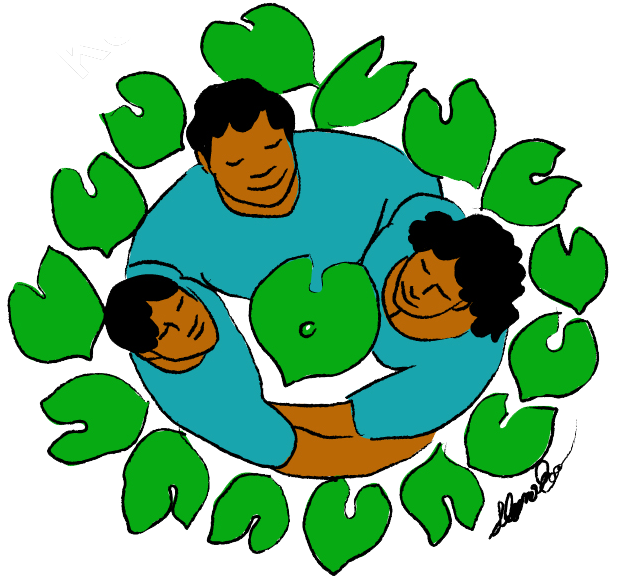KKV Timeline
-
November 3: Planning committee meets for the first time at Kalihi Baptist Church. Over the next six weeks, the committee develops a proposal for a community entity dedicated to meeting the unmet health and social service needs of the residents of Kalihi Valley.
-
February 27: First grant: $5,000 from the Lutheran Brotherhood Insurance Company.
March 10: First Board of Directors constituted. Pastor Henry Wiebb from Kalihi Baptist Church is first President.
One of the first staff members, Florida Felipe, rides the bus throughout the valley, asking commuting residents who they are and what concerns them most about their community, their families, and themselves.
The first Board of Directors has 21 seats. Four of these are held by churches, including the First Samoan Methodist Church, Our Lady of the Mount Roman Catholic Church, Christ the King Lutheran Church, and Kalihi Baptist Church.
October: Dr. Charles Judd and Dr. William Myers begin providing medical services at Kalihi Valley Homes. They work out of an apartment shared by the Mother’s Sewing Club and Public Health Nurses.
First medical examination table received. It is donated by Sister Maureen of Saint Francis Hospital.
November: Each week the staff sets up and removes room dividers made from galvanized pipes and cotton sheets, courtesy of George Mow. A sandwich board created by the Alexopolis’ with the words “CLINIC OPEN” stands outside the apartment.
-
July: Dr. Ron Carlson, volunteering his skills as a dentist, starts the KKV dentistry program.
KKV moves to a new home: two military surplus trailers purchased and renovated.
The trailers are renovated with the help of the Hawaii Job Corp and a host of volunteers. Rudy George does most of the external restoration. Pacarro arranges for a local contractor to donate all of the materials.
-
Dr. Bob Wiebe begins as a volunteer pediatrician. He initiates the pediatric residency program in conjunction with the University of Hawaii School of Medicine. Third year pediatric residents now fulfill their ambulatory elective at KKV.
-
Parasite lab opens in a bookmobile donate by Kalihi Union Church.
First Diamond Head Crater Festival takes place. KKV is one of three sponsors and beneficiaries, netting over $10,000. Fleetwood Mac is among the performers.
Shelter for abused spouses and children opens. (Shelter transferred to Child and Family Services in 1980) Over 800 mothers and children use the shelter in the first year.
-
Second Diamond Head Crater Festival takes place with KKV as co-sponsor.
-
KKV receives a $50,000 facilities grant from the Chamber of Commerce Community Public Health Fund.
The Kalihi Valley Community Development Credit Union opens its doors.
In the 1970s, low-income communities begin experimenting with community-based (rather than employer-based) credit unions. The Kalihi Valley Community Development Credit Union functions for two years until it closes its doors in 1980.
Phinon Lao Resource Center opens its doors. Started by KKV, the Center is a gathering place and support network for all ethnic groups from Laos.
1978-79: First grant received from Aloha United Way.
-
OB/GYN residency program begins.
First grant for automation: a computer, printer, and consultant time purchased.
First government contract: Department of Health awards a two-year contract to provide primary care to immigrants and refugees. KKV is one of three clinics to receive monies from DOH for this purpose.
-
$41,000 State grant initiates Family Planning services in Kalihi Valley. The grant includes money to replace one of the original clinic trailers with a newer trailer.
KKV becomes a WIC provider.
KKV receives new facilities: a construction site office purchased for $3,500 and an office trailer purchased for $13,000. The trailer becomes the new medical clinic.
-
Application for Community Health Center status submitted to federal government.
Community Health Center is approved but unfunded. The Public Health Service says they would not consider another request until KKV has three doctors and a permanent building.
Perinatal services begin.
KKV receives first federal 330 monies as a subcontractor to the Waianae Coast Comprehensive Health Center.
-
New facilities on Gulick Avenue completed (Now used for Elder Care). Staff moves in.
1986: First Community Health Center grant received from the US Public Health Service.
-
$100,000 grant from the Robert Wood Johnson Foundation to increase efficiencies in health care and financing through automation. KKV begins establishing a new computer system and network.
Social Services begin. KKV becomes the resident and delegate agency at Kalihi Valley Homes, a public housing project in Kalihi Valley.
-
May 12: First check deposited into the KKV Endowment Fund.
-
Access to Health program initiated. The result of a three-year $375,000 annual federal grant, the program focuses on helping public housing residents overcome the barriers to health care. The program is part of a collaboration with Ke Ola Mamo at Kuhio Park Terrace, a public housing project in Kalihi Valley.
KKV initiates Mental Health Services.
-
Over the years, crowding at Gulick Avenue building intensifies. Board of Directors approves construction of a new health center and launches capital fund drive. New facility to be underway by December 1997.
-
KKV becomes a provider of behavioral health services to schoolchildren eligible for services under the Felix vs. Waihee consent decree (resulting from a lawsuit against the state by parents of disabled children).
June 1997: KKV holds 25th anniversary celebrations and ground breaking.
-
The new Charles Judd Community Health Center opens its doors on School Street.
KKV is approved as a federally qualified health center.




